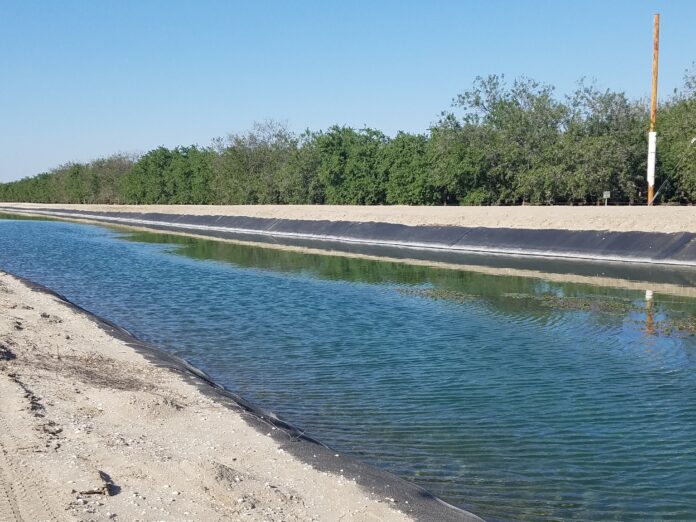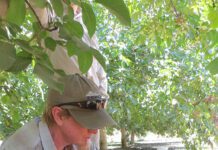
The heat is on! There isn’t a more critical time to get your irrigation dialed in than when the mercury climbs above 95 (degrees F). I drove by the San Luis Reservoir in early June only to see the water line already hundreds of feet down. With the delta still flowing well, but the conveyance pumps at a slow idle, our state isn’t doing us any favors. We have to be on our game to make ends meet and make every drop count. When those hot temps get there early in the morning, we have even more issues to deal with than just putting on water. It has to be efficient, and nutrients have to get into our trees. But how do we deal with this logistically?
My pistachio farm is easy. I live here. I also have an irrigation/fertigation scheduling system. I can program the start times, end times, hours of injections, choose from which tank products are injected, and decide how many days a week I want to run. That makes it nice. There are several companies developing and integrating these types of systems in the marketplace, and they really do make things more controllable. When you have more staff than, say, my wife and I, you will need to schedule system start times after someone is there to check leaks and system performance. Then schedule end times after someone is there to make sure nothing blew out the night before. Leaks are always a bad problem with coyotes and rodents looking for a drink. I’m not telling you anything you don’t know, but make it easy on yourself and your staff, and start being able to program your water in shorter sets more often. There are several advantages to this method. A system can actually pay for itself very quickly.
When we run 48-hour sets, we overly saturate the soil. It becomes anaerobic for a bit, and it’s also very easy to push soluble and single-charged nutrition below the root zone quickly. When we overapply, specifically at the end of a set, we lose a lot of that nutrition to leaching. I say inject your nutrition in the front of your sets and run shorter sets when you are fertigating. It’s more of a scheduling issue, but it saves time, money and becomes more efficient. When the soil gets saturated, the roots have already had their “big drink” up front, and they slow down on the uptake. If that big slug of fertilizer you applied with the water doesn’t get absorbed, or the good bacteria were knocked back by anaerobic conditions, hampering their ability to make it available, we lose it. It keeps flowing further into the soil. The next time we run water, that nutrition that got pushed down below the root zone gets pushed down further, and the cycle repeats itself. Wasted money.
My good buddy Guy Brautigam is a soil guru. He loves probing soil, figuring out chemistry and scheduling irrigations. He loves to say that by July 4, there isn’t much deep moisture anywhere in most of our soils. So, let’s stop trying to push it below those feeder roots. Run shorter sets more often. If we were able to run 12-hour sets every other day, we’d get those 48 hours of water on week one. But week two would only be 36 hours. Eight hours of running those pumps is a significant money savings. And the trees got a drink every other day in 100+ degree F temps without getting soggy. If the pumps were on at 5 p.m. and an irrigator’s shift ended at 6 p.m., he’d have time to check for leaks. Scheduling a morning irrigator at 5 a.m. would allow you to look for any leaks that may have arisen that evening.
Other reasons to attempt this style of irrigating and fertigating include more opportunities to inject nutrition more often at a slower pace, keeping it in the root zone, never letting the trees dry out while not getting soggy, and losing way less water to evaporation only running at night. The savings on nutrients and electricity could be a boost to the financials while making the whole system more efficient. It should also optimize yields, which puts more money in your pocket.
When prices are down, we have to resort to guerilla warfare to get a crop to market. Being vigilant on input costs with water usage can save us quite a bit of money. Keeping yields up with lower prices can even out some tough times. Going down that spiral of low prices and low yields makes it very difficult to farm. Several have resorted to the old-school approach our grandfathers did of N and K. You still have to apply a balanced array of plant-ready nutrients to keep yields at their peak and capitalize on every acre. With the state disrupting the system and the heat ramping up, we are being forced to be that much better. If we dig a little deeper now in our efforts, we may be able to keep a little more green on our side of the soil.















